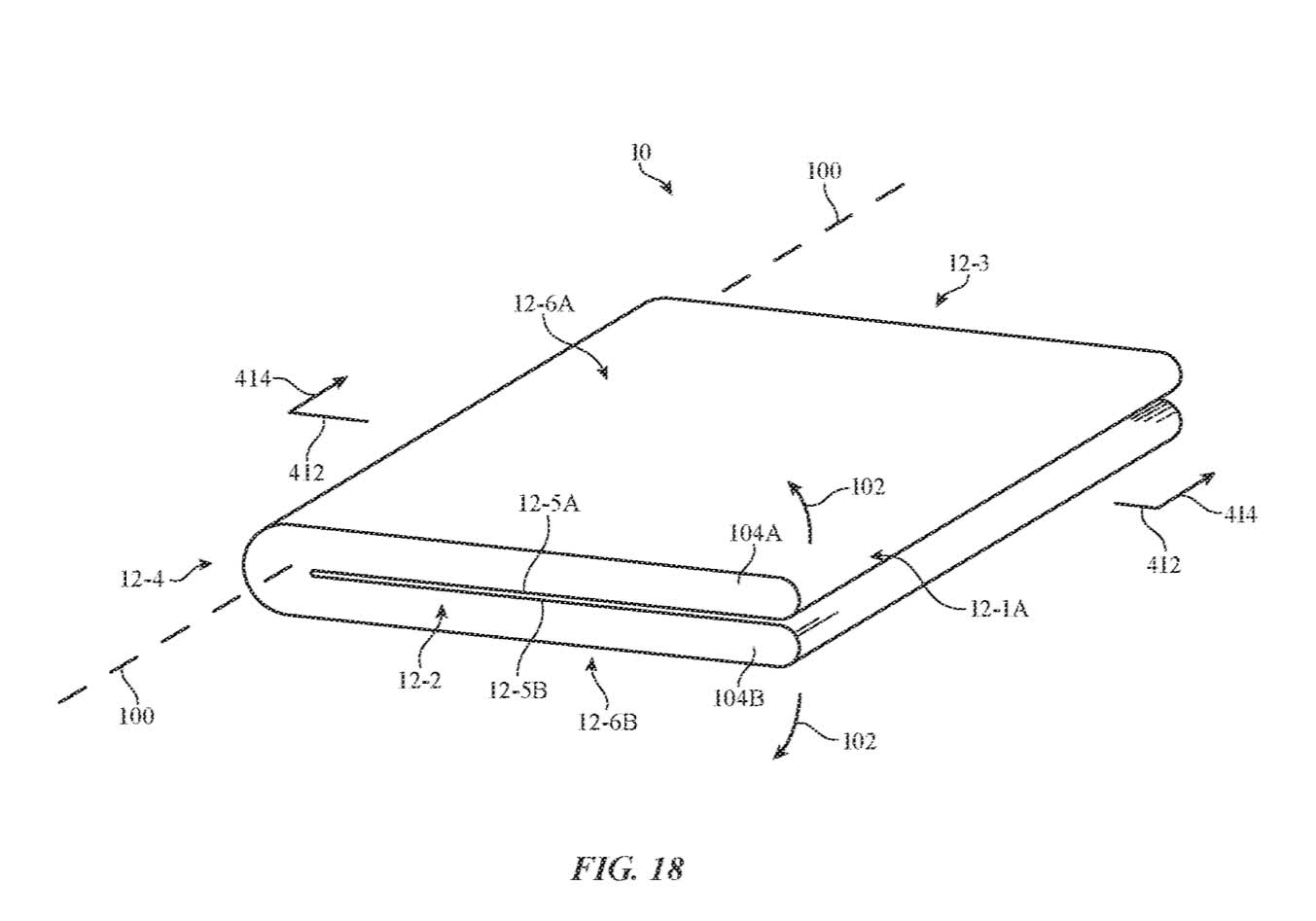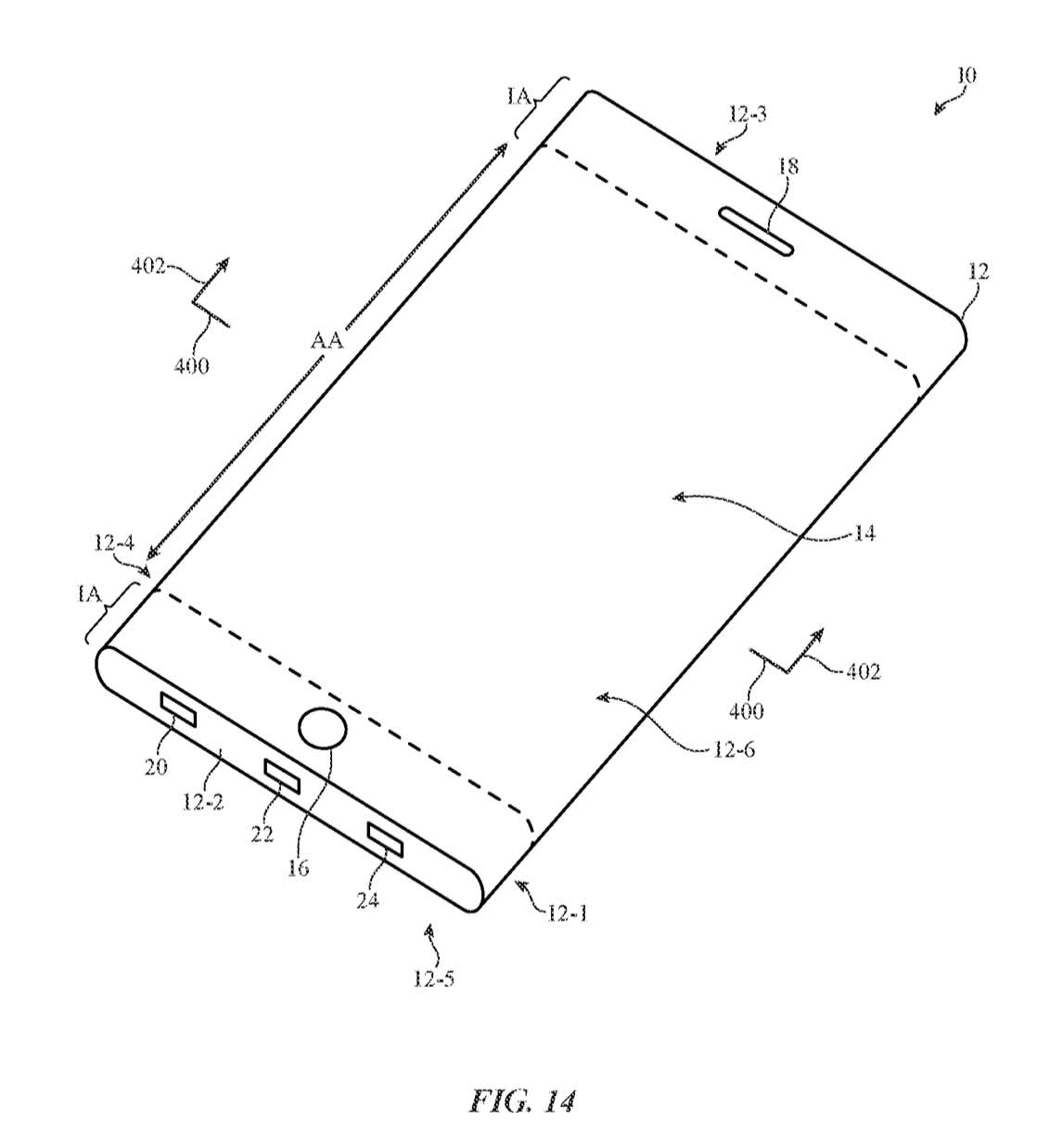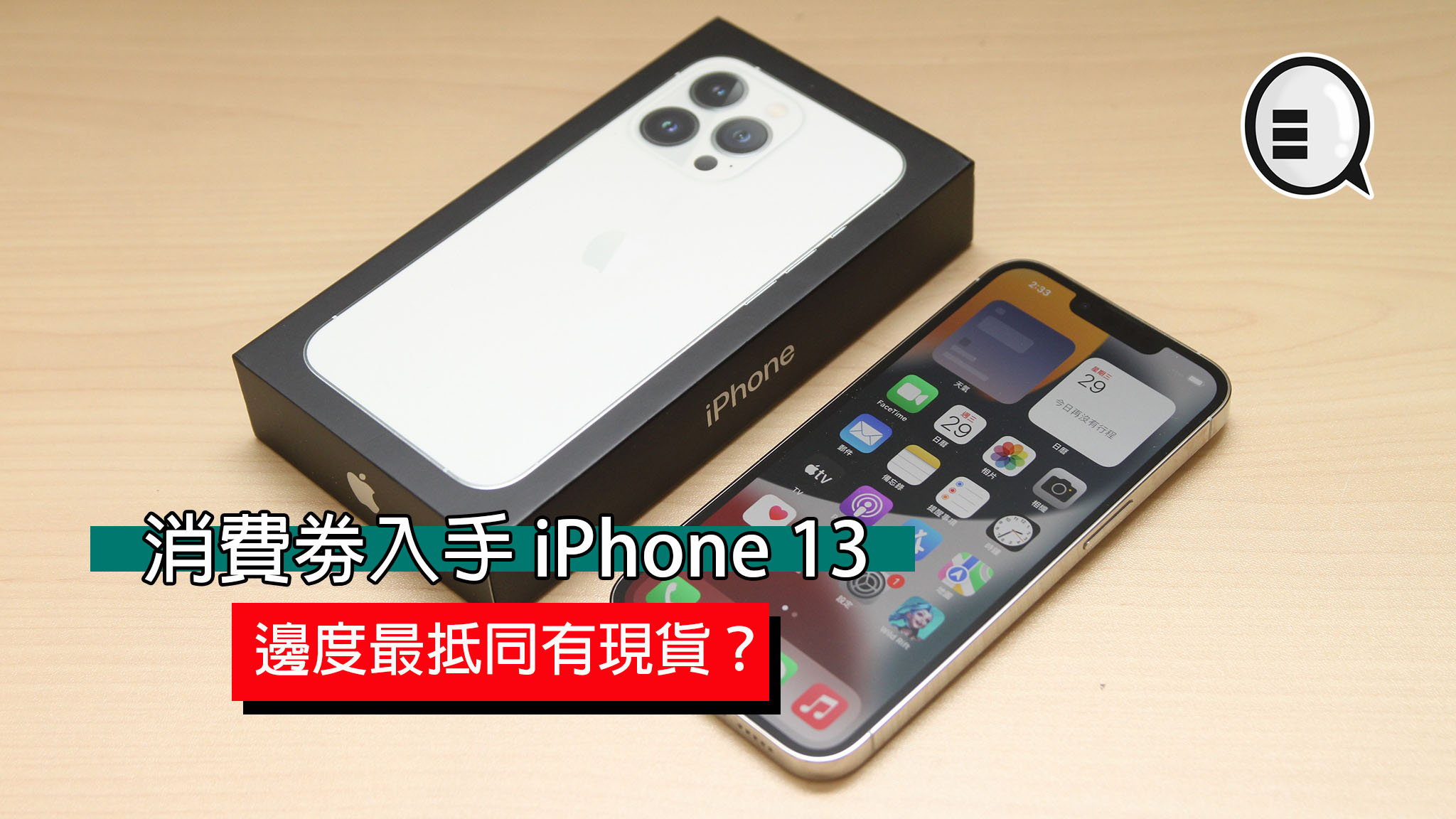TechSpot is about to celebrate its 25th anniversary. TechSpot means tech analysis and advice you can trust.
TL;DR: The USPTO granted Apple several patents this week. A touch interface that covers the entire device is one of the more intriguing ones. The concept would use touch sensors embedded in the chassis to provide user controls for things like volume, brightness, game controls, and more.
The first illustration Cupertino designers provided with the patent application appears to be a foldable iPhone. The patent proposes layering a flexible membrane containing touch sensors over the entire phone. The idea here would be that a user could still interact with the device without flipping it open, making it more user-friendly.
“It can be challenging to gather touch input from a user and to display images for a user efficiently,” the application explains. “For example, when a user supplies touch input to a touch screen display, the user’s hand may block images that are being displayed on the display.”
The company also believes that solid-state touch sensors are more versatile than physical switches. Indeed, a control panel on the phone’s chassis could change or adapt to the device’s state. For instance, while folded, the rear screen and control panel could provide a means to answer a call on the speaker or dismiss it. While in its unfolded state, these controls can be disabled to prevent accidental activations or moved to the sides of the device.

Taking it a step further, while listening to streaming music with the phone folded, the control panel could give the user access to volume, track switching, and scroll browsing. The controls could then dynamically switch to a phone UI when receiving calls.
The overall idea behind the patent is excellent, especially for a folding device, but Apple didn’t want to limit its vision. It mentioned that it could apply the tech to non-foldable devices as well. The patent describes using the touch-sensitive layer to provide a wrap-around screen on a standard iPhone. Recent leaks suggest the iPhone 15 might ditch external buttons and replace them with solid-state controls with haptic feedback. If those rumors hold, we could see this patent bear fruit well before seeing a foldable iPhone.
One of the weirdest use cases Apple mentions is putting video game touch controls on the back of the phone.
“In gaming applications and other applications, it may be desirable to use a touch sensor on the rear surface of device to gather touch input while displaying associated visual information on a display on the opposing front surface of device [sic].”

This functionality is not the best example of a user-friendly application. Aside from the awkward contortions a player’s hands would have to make to both hold on to the phone and use controls on the back, there is a whole not-so-shallow learning curve that gamers would have to go through to become accustomed to rear-facing inputs that they cannot see. How would a game tutorial for that even look?
I think the point Cupertino is trying to get across is the concept’s versatility. With sensors on every surface, there are limitless ways that developers could implement those into their app UI, no matter what type of application. The primary disadvantage to this, whether foldable or not, is that it makes it much more susceptible to damage. A case can protect the phone but at the cost of losing touch functionality.
That said, Apple has a bazillion patents in its graveyard of lost ideas. Don’t hold your breath that this one will ever bear fruit. As with all its concepts, Apple just wants to be sure that it thought of it first because it has had its share of patent trolls.
Note: This article have been indexed to our site. We do not claim legitimacy, ownership or copyright of any of the content above. To see the article at original source Click Here












